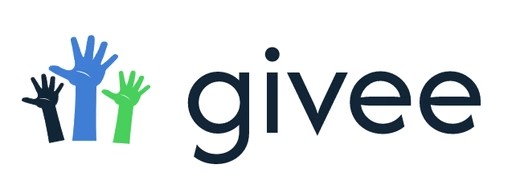Donor Segmentation: Why It Matters and How to Use It to Boost Donations Today – Actionable Steps for Nonprofits
on
Sep 28, 2024
What is Donor Segmentation?
Let’s say you’re running a nonprofit and have this long list of donors. You’ve got people who have donated once, some who donate every year, and others who give whenever you send a specific type of request. Now, here's a question: would you send the same email to someone who gave $20 five years ago and someone who just donated $1,000 last month? Probably not, right? This is where donor segmentation comes in.
Donor segmentation is basically a way to split your donor list into smaller groups based on things they have in common. Maybe some of them love your environmental work, while others are all about the educational programs you run. By grouping these donors, you can send them the information or updates that matter most to them, and guess what? They’re way more likely to respond positively when you do that.
In today's world, where everyone gets tons of emails and donation requests, personalized communication is everything. Donor segmentation lets you cut through the noise and speak directly to what matters to your supporters. And honestly, that makes all the difference in keeping them engaged and getting them to give again.
So, if you haven’t started segmenting your donors yet, don’t worry – you’re not alone! But after reading this, I’m confident you’ll see how easy it can be to get started and how much it can boost your donations.
Why Donor Segmentation is Essential Today
Let’s be real,today's donors expect a lot more than just generic thank you emails. They want to feel like they’re part of something meaningful and personal. That’s why donor segmentation is more important now than ever.
Think about it: would you keep engaging with a nonprofit if they treated you the same as everyone else, never acknowledging your specific interests or past contributions? Probably not. But when nonprofits take the time to understand their supporters, whether it's by acknowledging the size of their donations, the causes they care about, or even how often they want to hear from you, it builds a stronger connection.
Segmentation helps nonprofits increase engagement by sending the right message to the right people at the right time. When done well, donors feel valued, and that means they’re more likely to give again. Plus, it can lead to higher donations because people are more willing to give when they see that their contributions are making an impact.
Bottom line? Donor segmentation isn’t just a nice-to-have anymore; it’s a must if you want to boost your donations and keep your supporters engaged long-term.
Types of Donor Segmentation
So, how exactly can you segment your donors? There are a few tried-and-true methods that nonprofits use to create meaningful connections with their supporters. Here are the most common types of donor segments you can start with:
So, how exactly can you segment your donors? There are a few tried-and-true methods that nonprofits use to create meaningful connections with their supporters. Here are the most common types of donor segments you can start with:
Giving History: Have they donated once, or are they recurring donors? Knowing this helps you tailor your outreach. For example, first-time donors might appreciate more information about your work, while repeat donors may respond better to a thank-you and a call for continued support.
Donation Amount: A donor who gave $50 may need a different follow-up than someone who gave $1,000. You could use this information to adjust your messaging, so each donor feels like their contribution, big or small, makes an impact.
Engagement Level: Are they attending your events, sharing your social media posts, or volunteering? These active supporters might appreciate more ways to get involved beyond just giving money.
Cause Interest: Do they donate because they care about a specific part of your mission? Maybe some love your environmental work, while others are passionate about your education initiatives. By identifying what moves them, you can send targeted updates about those specific programs.
Communication Preferences: Some donors want regular updates, while others prefer to hear from you only once or twice a year. Pay attention to how often they engage with your emails, newsletters, or social media.
Once you break your donor list into these groups, you’ll find it’s much easier to connect with your supporters on a personal level, which is key to building long-lasting relationships.
Need help getting started with donor segmentation or setting it up for your nonprofit? Don’t worry! We’re here to help you make this process easy. Feel free to reach out, and we can guide you through the steps or set up your system so you can start segmenting and boosting your donations right away!
How to Implement Donor Segmentation for Your Nonprofit
Now that you know how important donor segmentation is, you’re probably wondering: how do I actually get started? The good news is, it’s not as complicated as it sounds. Here’s a simple guide to help you implement donor segmentation for your nonprofit:
Gather Your Donor Data
First, you need to collect and organize all the data you have on your donors. This includes donation amounts, giving history, event attendance, and any other interactions they’ve had with your organization. If you’re using a donor management system (DMS) or customer relationship management (CRM) tool, this information is usually available at your fingertips.Decide on Your Segments
Based on the data you’ve collected, decide which donor segments make the most sense for your nonprofit. Start simple, maybe with two or three segments, like “recurring donors,” “major gift donors,” and “first-time donors.” You can always add more as you get more comfortable.Choose the Right Tools
If you’re not already using a donor management tool, it might be time to look into one. Tools like Charity Engine, Bloomerang, or Givee.io (just to name a few) can help automate the segmentation process for you, making it easier to group donors and track their behaviors.Personalize Your Messaging
Once your segments are set up, it’s time to create tailored messages for each group. For example, your first-time donors might appreciate a warm welcome and some background on your nonprofit’s mission, while your recurring donors may love updates on how their support is making a difference. The key is to make each segment feel like you’re speaking directly to them.Test and Adjust
As you start using segmented communication, keep an eye on the results. Which segments are responding best? Are there certain messages that seem to resonate more than others? Don’t be afraid to tweak your approach as you learn more about what works for your supporters.
Bonus Tip: If you need a hand setting this up or choosing the right tools, don’t hesitate to reach out. We’re here to help you get your donor segmentation strategy off the ground!
Actionable Steps to Apply Donor Segmentation
You’ve got your donor segments, now what? The beauty of segmentation is that it allows you to take immediate action to better connect with your supporters. Here are some easy steps you can apply right away:
Personalize Your Thank You Messages
A simple but effective first step is to personalize your thank-you notes. For example, first-time donors can get a heartfelt welcome that shares a bit more about your mission, while your major gift donors might receive a personal message from your leadership team. Tailoring your gratitude makes donors feel more appreciated.Customize Your Campaigns
Not every donor is going to respond to the same fundraising campaign. Use your segments to customize your asks. Recurring donors could be invited to join a monthly giving program, while one-time donors might be asked to contribute during special campaigns like #GivingTuesday or year-end appeals.Create Targeted Newsletters
When sending newsletters, break them down by interest or engagement level. For example, if a donor is passionate about environmental causes, highlight the latest updates on your environmental programs. If someone is more involved in your educational work, make that the focus for them.Re-engage Lapsed Donors
Don’t forget about donors who haven’t given in a while. Segmentation makes it easier to reach out to lapsed donors with a friendly reminder of the impact they made in the past and how they can continue supporting the cause.Offer Different Levels of Engagement
Not all donors want to engage in the same way. Some might want to volunteer or attend events, while others just want to make a financial contribution and hear occasional updates. By segmenting your donor base, you can invite donors to engage in ways that are comfortable and meaningful to them.
Want more ideas on how to maximize your donor engagement using segmentation? Reach out, and we’ll be happy to brainstorm strategies tailored specifically to your organization!
Benefits of Donor Segmentation: Real-World Results
When you start segmenting your donors, you’ll see results almost immediately. Not only will you boost your engagement rates, but you’ll also notice that donors feel more connected to your mission. Here are just a few of the key benefits nonprofits have seen by using donor segmentation:
Higher Donation Rates: Donors are more likely to give again (and give more!) when they feel like your messages are tailored specifically to them. When they see the direct impact of their contributions, it deepens their connection to your cause.
Improved Donor Retention: Keeping donors engaged and feeling valued is the secret to retaining them long-term. By personalizing your communication through segmentation, you’re building stronger relationships that lead to repeat donations and continued support.
Better Targeting for Fundraising Campaigns: Instead of sending out mass emails, you can use your segmented lists to run highly targeted campaigns. That means better results, higher response rates, and less donor fatigue.
Stronger Connections and Loyalty: When donors receive messages that resonate with their personal values and interests, they’re more likely to stay involved with your organization. It feels less like a transaction and more like a meaningful partnership.
Ultimately, donor segmentation helps you create a personalized experience for your supporters, which leads to bigger donations and a loyal donor base. It’s a win-win!
Ready to start seeing these results for your nonprofit? If you need a hand getting set up, we’re here to help! Let’s work together to create a donor segmentation strategy that makes sense for your organization and maximizes your fundraising potential.
Related Articles
Unlimited Pages and Leads: The Key to Growing Your Business Without Limits
Jan 25, 2025
How Landing Page Audits Can Transform Your Conversion Rates
Jan 24, 2025
Why Your Business Needs a Dedicated Conversion Expert to Grow Revenue
Jan 22, 2025
Receive the best tips for your non-profit campaign!
Get free tips to increase revenue
Most of our suggestions take a few minutes to implement.

